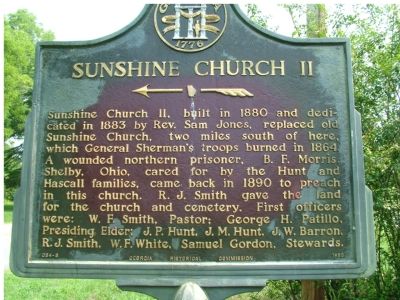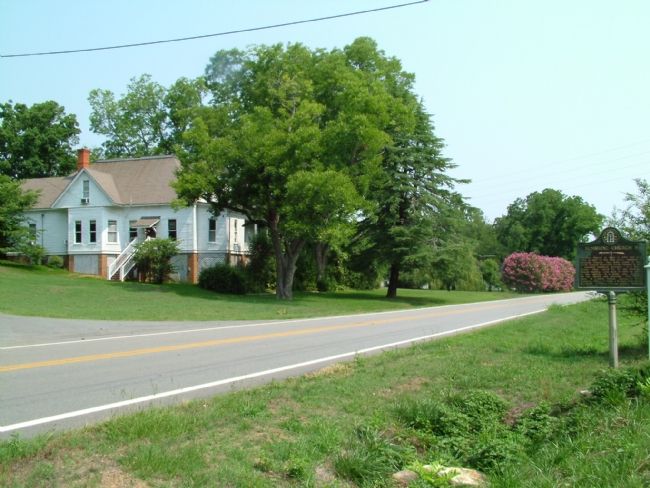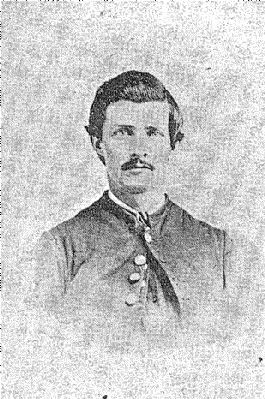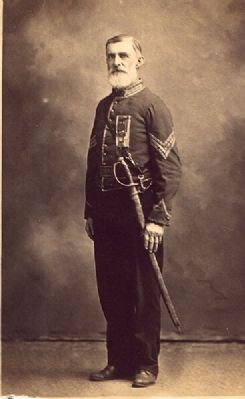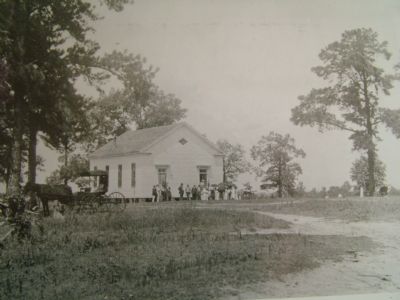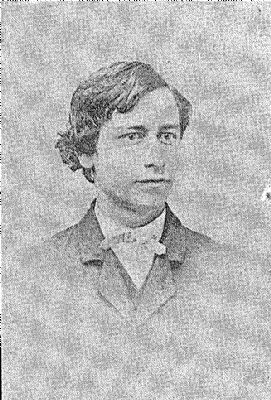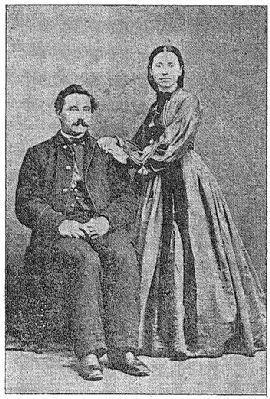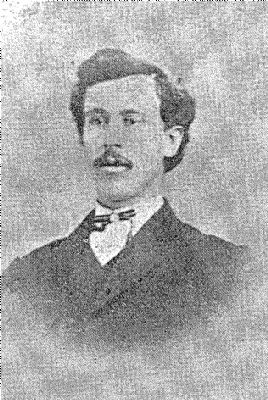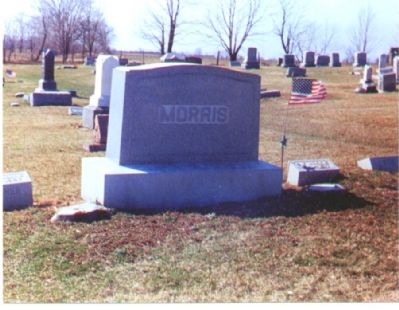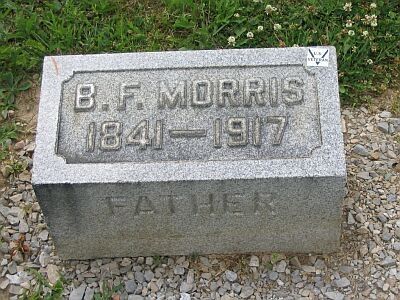Round Oak in Jones County, Georgia — The American South (South Atlantic)
Sunshine Church II
Sunshine Church II, built in 1880 and dedicated in 1883 by Rev. Sam Jones, replaced old Sunshine Church, two miles south of here, which General Shermanís troops burned in 1864. A wounded northern prisoner, B.F. Morris, Shelby, Ohio, cared for by the Hunt and Hascall families, came back in 1890 to preach in this church. R.J. Smith gave the land for the church and cemetery. First officers were: W.F. Smith, Pastor: George H. Patillo, Presiding Elder: J.P. Hunt. J.M. Hunt, J.W. Barron, R.J. Smith, W.F. White, Samuel Gordon, Stewards.
Erected 1955 by Georgia Historical Commission. (Marker Number 084-8.)
Topics and series. This historical marker is listed in this topic list: War, US Civil. In addition, it is included in the Georgia Historical Society series list. A significant historical year for this entry is 1880.
Location. 33° 6.501′ N, 83° 36.913′ W. Marker is in Round Oak, Georgia, in Jones County. Marker is on Monticello Highway (State Highway 11) south of Jackson Road, on the right when traveling north. Touch for map. Marker is in this post office area: Hillsboro GA 31038, United States of America. Touch for directions.
Other nearby markers. At least 8 other markers are within 8 miles of this marker, measured as the crow flies. Sunshine Church (about 400 feet away, measured in a direct line); The Stoneman Raid (approx. 1.3 miles away); Planterís Academy (approx. 3.3 miles away); Hillsboro (approx. 4.9 miles away); Across the Ocmulgee (approx. 4.9 miles away); Birthplace of Benjamin Harvey Hill (approx. 4.9 miles away); Benjamin Harvey Hill (approx. 5.1 miles away); Blountsville (approx. 7.7 miles away).
Additional commentary.
1. Battle at Sunshine Church in 1864
I would very much like to have a picture of the original church. My greatgrandfather was captured there in the battle during the Civil War. He was under the command of General George Stoneman. Thank you very much. Regards from North Georgia. Peggy Jones Chapman
— Submitted May 6, 2007, by Peggy Jones Chapman of Morganton, Georgia.
2. About B. F. Morris
B. F. Morris was my wifeís great-grandfather. He is buried in the cemetery across the road from the Shenandoah Christian Church in Richland County, Ohio. The community of Shenandoah is on U.S. 13, north of Mansfield, Ohio, and 10 miles east of Shelby.
The 1897 book, The Story of the Sherman Brigade by Wilbur F. Hinman, contains many quotes from B.F.ís diary and pictures of the men of the Ohio Volunteers.
— Submitted May 31, 2007, by Mark and Maryann Pifer of Columbus, Ohio.
3. Chapter LXXVI, The Stoneman Raid—Atlanta
This is a complete transcription of the chapter from The Story of the Sherman Brigade by Wilbur F. Hinman. It recounts the Battle of Sunshine Church from the Northern point of view. The chapter begins on page 889. The three illustrations found in this chapter are reproduced as photographs 7, 8 and 9. Bold type was not in the original. It has been added to guide the reader.
We now come to what is known as “Stonemanís raid,” during which the Squadron was “hit hard.” The object of the expedition was to destroy the rebel line of supplies by cutting the railroad leading from Macon to Atlanta. Stoneman, with four thousand cavalry, on the left, and McCook, with two thousand, on the right, received orders to move around Atlanta, Stoneman by McDonough and McCook by Fayetteville, thence to converge rapidly so as to arrive simultaneously at Lovejoyís station, thirty miles south of Atlanta. McCook started according to instructions, reached Fayetteville, where he destroyed a rebel wagon train and took two hundred and fifty prisoners.
Thence he marched to Lovejoyís, where he arrived at the designated time, and proceeded to destroy the railroad at that point. Stoneman did not appear, but Wheeler did. Therefore, on the 29th, McCook moved in the only direction left open by the enemy, to the southwest. At Newman he was checked by a force of rebel infantry, until the pursuers closed in around the rear. McCook, however, succeeded in cutting his way out, with a loss of five hundred men, and returned to Marietta.
McLaughlinís Squadron belonged to the column of Stoneman, which had been concentrated on the left of the Union line, near Decatur, and from that point passed around Atlanta to the eastward. The following narrative of the Squadronís adventures is a composite story, compiled from the accounts furnished by Sergeant Pomeroy, Sergeant Morris, and Bugler Everly :
The command started from the left on July 27th [1864] to carry out its part of the program. At the last moment Stoneman got permission from General Sherman to go below Lovejoyís to Macon and thence to Andersonville, for the purpose of releasing the Union prisoners there confined. Stoneman proposed this, and Sherman only consented on condition that he should join McCook and with the united force defeat Wheeler, and then send General
Garrardís division back to the main army. Stoneman detached Garrardís division and with about three
thousand men proceeded southward on a hazardous and, as it proved, disastrous expedition.
Although the start was made under unfavorable auspices, Stoneman finally succeeded in eluding General Wheeler, crossed the Ocmulgee river high up near Covington, and followed the river down on the east bank. Reaching Clinton, detachments were sent out, which struck the railroad leading from Macon to Savannah, at Griswold station, and destroyed seventeen locomotives and more than one hundred cars. One of the detachments burned the railroad bridge across the Oconee river and all reunited in front of Macon. Stoneman shelled the town, but the river lay between and he could not cross by the bridge, which was strongly guarded with cannon in such a position that they effectually covered the approaches. The railroad bridge, in like manner, was defended by 12-pounders placed on flat cars, which were run out on the bridge and discharged, and then drawn back for reloading. This artillery duel was kept up for two hours, when Stoneman returned to Clinton, where his retreat was obstructed by Generals Wheeler and Iverson.
Matters soon assumed a very critical aspect. Confronted by a largely superior force, as Stoneman supposed, further progress in carrying out the plan of the expedition seemed impossible. The only alternative was for him to attempt to cut his way out through the enemyís
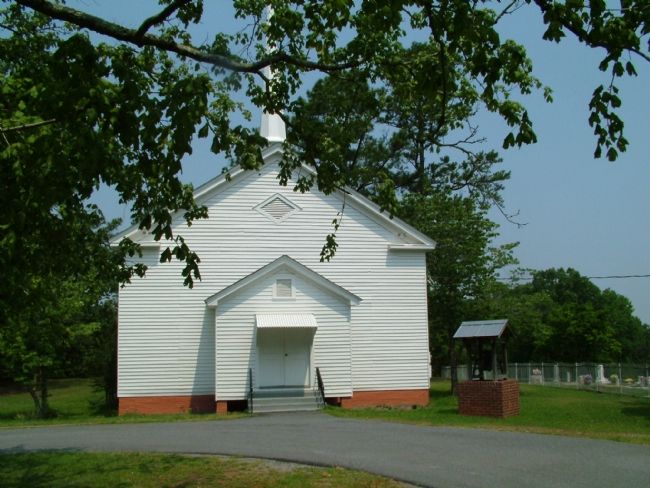
Photographed By Donald D. Daniel, February 6, 2006
5. Sunshine Church II
This is the church as it appears today. The cemetery is located to the right of the church.
Vanishing North Georgia website entry:
Click for more information.
Vanishing North Georgia website entry:
Click for more information.
About sundown on the 30th of July, Colonel Adamsís brigade met the advance of Wheelerís command, and skirmishing was kept up most of the night. The rebels were forced back during the night several miles. Two hours before daylight we stopped to rest, having been in our saddles almost continuously for five days and nights. Just at daybreak Colonel Capronís brigade, was ordered to take the advance. The Squadron formed a part of that brigade, being temporarily attached to the Fourteenth Illinois cavalry. As we marched forward everything was quiet, not a shot was fired on either side, but we all seemed to realize that a crucial trial was at hand.
On the 31st hard fighting began soon after dawn. That the enemyís force was considerably larger than that of Stoneman was apparent. The Union troops were attacked in front, flank and rear. They made stout resistance, but there seemed little hope of a successful issue. At one time the rebels were pushed back some two miles. At this point was the severest fighting of the day. The Union force was overwhelmed and compelled to fall back.
About two oíclock it became evident that it would be impossible to get the command through the rebel lines. Stoneman, not disposed to lose his entire force, dispatched Colonel Adams with a thousand men and Colonel Capron
with eight hundred, to make their way back to the lines. With seven hundred men, including the Squadron, he made a stand on the right of the road in the woods. He was determined, if necessary, to sacrifice this force and himself in order to save the others.
Ordered to dismount and charge the rebels, the men did so with the greatest spirit, creating much confusion in the hostile ranks. It was soon learned, however, that the enemy was in Stonemanís rear, among the horses, with a strong force. It was then that the little band remaining with Stoneman was broken and the general was captured, together with the small guns in the road, from which the Squadron had deployed as skirmishers. Stoneman surrendered to General Iverson. His organizations, of course, went to pieces, and it was every man for himself, to get away if he could.
At the foot of the hill on which this fight occurred ran a small creek which formed a quicksand bog. It was in trying to cross the stream at this point that about half of the Squadron were captured. They eventually reached Andersonville, but not in the high feather they expected at the inception of the raid. About two hundred of this devoted band which remained with Stoneman succeeded in making good their escape, and at eight oíclock that evening endeavored to take a brief rest, by going into camp. Captain Skeggs, of Company A, was in command
of the remnant of the Squadron. Sergeant Albert A. Pomeroy and fifteen men were detailed for picket duty. There was no disturbance at the picket post during the night, but when they returned to the camp at daybreak they found that the tired soldiers they were guarding had been carried off or dispersed by Wheeler. Sergeant Pomeroy and his handful of men made the best of theirway back to Marietta in good order. The force that had been dispersed straggled in for two weeks afterward. Captain Skeggs was among the last that reached our lines.
The engagement which ended so disastrously to the Squadron is best known to its members as the battle of Sunshine Church. Officially it is designated the battle of Hillsboro. The loss in killed and wounded was not as large, as might have been expected, but these and the captured reduced the strength of the Squadron by one half. Several died in captivity, and a number lost their lives by the explosion of the steamer Sultana. An account of this appalling disaster is given elsewhere in this volume. The action took place about one hundred miles from Shermanís army. Those of the Squadron who finally reached the Union lines endured great privation and suffering from hunger, exposure and fatigue. Nearly all had narrow escapes from capture. The negroes gave them food and directed them on their way. Much of the time they traveled only by
night, keeping in concealment by day.
There is an interesting incident connecting this engagement with an engagement of a different kind; combining grim-visaged war and the tender passion, which had a happy sequel. Sergeant Barzillah F. Morris and Israel W. Miller rode into action side by side. The first rebel bullet struck Morris, inflicting a severe wound which completely disabled him, resulting in his capture by the enemy. A short time afterward a ball pierced Millerís body from right to left, passing through his blouse pocket. In this pocket he carried a photograph of a young lady to whom he was warmly attached or, to speak in the phrase of the time, “his girl.” The bullet left behind a round hole directly through that picture. Miller, wholly unable to leave the field, soon found himself a prisoner. That he recovered from his wound is a marvel, but he did, and spent months in captivity, suffering the horrors of Andersonville and other southern prisons. It goes without saying that he prized that wounded photograph above all his other earthly possessions. Twice the rebels, with no fellow-feeling in their Confederate souls, in a spirit of meanness took it from him and flung it away. Each time, when the eyes of the guards were not upon him, he managed to recover and conceal it.
The end came at last, the prison gates were thrown wide open, and
Miller returned home. The pleasant melody of wedding bells was soon heard, and the lady whose photograph had been through such a strange experience became Mrs. Miller. The picture here reproduced was taken a short time before the happy event last mentioned. The narrative is embellished with the joint picture, and Miss Catharine Sonnanstine enjoys the distinction of being the only lady who appears among the warriors of the Sherman Brigade in this “Story.”
Early in the day of the battle a field hospital for the wounded had been established at the house of a citizen named Frank Hascall, in charge of Assistant Surgeon John I. Wilkins, Fourteenth Illinois cavalry. When the break came this hospital was taken by the enemy, with the wounded. A place of worship called Sunshine church, from which the action took one of its names, was fitted up for hospital purposes, and a week after the battle the wounded were removed thither. As soon as sufficiently recovered to permit their transfer they were taken to military prison at Macon or Andersonville.
The wounding of Sergeant B. F. Morris, at the beginning of the action, has been mentioned. He was taken prisoner at the Hascall house. While there, before his removal to the church, he was most kindly cared for by the wife and daughter of a Confederate colonel, named Hunt. They visited him often while
he was a patient in the church and did much to relieve his sufferings, Morris writes:
“Twenty-five years later I visited the battlefield of Sunshine church, accompanied by my wife and youngest daughter. We went to visit the southern lady, Mrs. Jessie Hunt, who had done so much for my comfort while I was there a wounded prisoner. We spent three weeks with the family, and while there I preached to the people in a meeting-house built since the war, on the spot of ground where the hardest fighting was done, and where most of the dead and wounded on both sides had lain. Some of the shells thrown during the battle were lying under the house where I spoke. While we were there, Mr. Frank Hascall made a barbecue for us. It was in his house that I passed my first night a prisoner. While lying there on the floor, wounded and bleeding, I put in most of the night in meditation. I wondered if I would ever live through the prison life, and meet her whom I hoped to make my wife when the war was over. While we were seated at the table, on the exact spot where I had lain that night twenty-five years before, my feelings were indescribable. I looked at the floor and then at my wife, and it was with difficulty that I could control my emotions.”
Morris has this item in his diary, under date of October 15th : “Got my boots half-soled today ; cost me ten dollars.” Whether it was in greenbacks or Confederate money, he does not say.
Bugler Thomas Everly of Company B, tells this experience of a party of wanderers:
“After the break-up a great many were unable to get their horses and were captured. The writer, with three others, secured horses, and taking on one comrade each, which made eight of us all told, we started to hunt a way out. We succeeded, although we had but a slim chance. After six days riding, with scarcely any sleep and very little to eat, we came to the Chattahoochee river, about twenty-five miles south of Atlanta. We crossed the river and finally struck the Union line at Marietta. During our march for freedom we were mainly guided by the sound of General Shermanís artillery at Atlanta. The closest call that we had was at Athens, Georgia. Here some rebel home-guards lay in wait for us, but we had just received from some negroes a fresh horse apiece, and using our spurs freely we were soon out of their sight.”
Before leaving the subject of Sunshine church, it may be of interest to say that war historians who have written of Stonemanís raid agree that the opposing Confederate force was not as large as General Stoneman believed. General Sherman expressed the opinion that Stoneman could have eluded the enemy or cut his way through and saved practically all of his command. One writer says : “His sacrificing himself to enable his subordinates to make good a retreat was personally honorable to him, but the facts, as afterward discovered, showed that he had been deceived as to the enemyís force, and that his position was by no means desperate.”
Shortly after this event Lieutenant Jacob O. Stout, of company B, was detailed with sixteen men, for picket duty. Sometime in the afternoon a girl came to the post and told him that a small force of rebel cavalry was getting ready to surprise it, The lieutenant sent out part of his men to learn the truth as to this report. While these were absent the rebels came in and captured the entire squad remaining at t h e post. When the scouting party returned they ran into the rebels and were also captured, with the exception of Corporal John Rope and Darius Robinson, who succeeded in cutting their way through the enemy and returning to camp. . Isaac Wayne was mortally wounded in this affair.
During the remainder of the month of August Shermanís army was lying in the trenches, engaged in the siege of Atlanta. The Squadron now had scarcely fifty men for duty. Before the evacuation of Atlanta it had little to do except to recuperate from the Stoneman raid. During the last days of August, Sherman planted the body of his army squarely in the rear of the Confederates and during the night of September 1st, Hoodís army evacuated Atlanta. The following day the city was occupied by the Union troops of General Slocum. The Squadron participated in the movement of Sherman which compelled Hood to let go of Atlanta. The cavalry was constantly in motion upon the front, flank and rear of the army, and had some heavy skirmishing with the enemy. In company with other horsemen the Squadron rode into the city, amidst great demonstrations of rejoicing on the part of the Yankees.
During the Atlanta campaign, the cavalry division to which the Squadron belonged was ostensibly attached to the Twenty-third corps. There was always more or less good natured chaffing between the two arms of the service. The infantryman would sing out when the opportunity offered : “Who ever saw a dead cavalryman !” to which the cavalryman promptly replied : “Did an infantryman ever move fast enough to see a live rebel ?” The record shows that the losses of the Twenty-third corps and the cavalry were about equal, proportionate to their numbers.
— Submitted June 1, 2007, by Mark and Maryann Pifer of Columbus, Ohio.
4. Battle of Sunshine Church
My great grandfather was a trooper in the 5th Indiana cavalry, surrendered by Stoneman at Sunshine Church. I'm interested in learning all I can about the battle. Note To Editor only visible by Contributor and editor
— Submitted May 18, 2010, by Christopher Sweet of Chicago, Illinois.
Credits. This page was last revised on November 3, 2021. It was originally submitted on July 21, 2006, by Donald D. Daniel of Forsyth, Georgia. This page has been viewed 5,734 times since then and 40 times this year. Last updated on July 6, 2008, by David Seibert of Sandy Springs, Georgia. It was the Marker of the Week August 19, 2007. Photos: 1, 2. submitted on September 2, 2006, by Donald D. Daniel of Forsyth, Georgia. 3. submitted on June 1, 2007, by Mark and Maryann Pifer of Columbus, Ohio. 4. submitted on May 31, 2007, by Mark and Maryann Pifer of Columbus, Ohio. 5, 6. submitted on September 2, 2006, by Donald D. Daniel of Forsyth, Georgia. 7, 8, 9. submitted on June 1, 2007, by Mark and Maryann Pifer of Columbus, Ohio. 10. submitted on June 2, 2007, by Mark and Maryann Pifer of Columbus, Ohio. 11. submitted on June 24, 2007, by Mark and Maryann Pifer of Columbus, Ohio. • Kevin W. was the editor who published this page.
